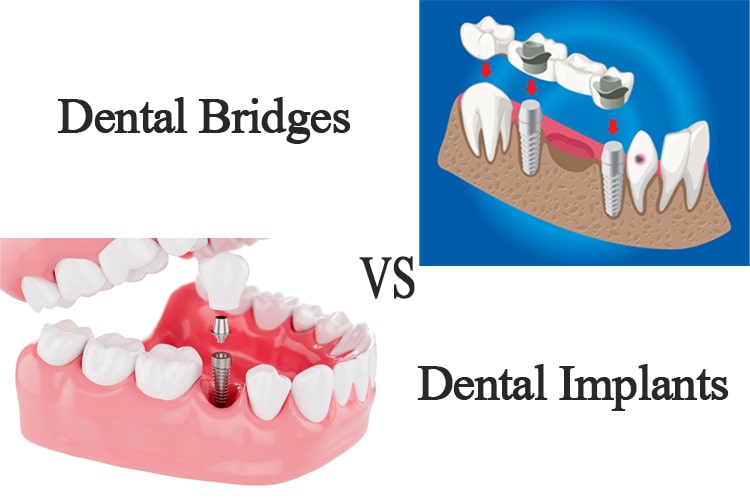Losing teeth could have a big influence on your smile's beauty while also causing problems with efficiency. It might also have a negative impact on your self-esteem. Implants and tooth bridges are two of the most prominent methods used by dentists to solve these issues.
Although both techniques basically handle the same problems, they provide you quite distinct technical solutions to explore. It's essential to comprehend the various alternatives available to you if you're looking for the best remedy for tooth loss. It's also critical to grasp what each one comprises before selecting if it's appropriate for your personal requirements. Here's all you need to understand about implantation and bridging, as well as how to choose the right one for you.
What Do We Understand By Dental Implants?
A tooth's underlying anatomy is more complex than most people realise. When this component, which consists of bone, tendons, and neurons, is destroyed, the surrounding area gradually deteriorates.
A partial denture is a metal post, usually made of titanium, that replaces this component. New bone should form around the transplanted metal over the course of several months. Once your dentist has confirmed that the new framework is solid, a cap will be fitted over the implantation and secured in position.
What Are The Advantages Of Implants?
Among the most inherent benefits of dental implants is that they exert less stress on the neighbouring teeth and stimulate bone and tissue recovery beneath the teeth.
They also have a tendency to lower the jaw's long-term hazards. In most cases, a high-quality partial denture will last a lifetime.
What Are The Disadvantages Of Implants?
Dental implants have the downside of being a pricey procedure. Especially when a big number of selected teeth must be replaced in various locations. It's not uncommon for surgeons to propose a routine dental bridge rather than an implant when replacing a significant number of teeth.
What Do We Understand By Dental Bridges?
A dental bridge connects the healthy teeth remaining in the mouth on either side of a gap to form a connection spanning the space in a person's mouth. The two teeth on different sides of a space are scraped down to allow a connection in more orthodox variants of the treatment.
After that, a crown is placed on each tooth, followed by the bridging, which replaces the lost teeth. Doctors now frequently utilise a flapped, or Maryland bridging which is incorporated into the adjoining teeth instead of a fully capped bridge in areas of the jaw that can withstand less strain or if only one tooth is absent.
What Are All the Perks Of Dental Bridge?
•Bridges offers the benefit of being one of the most cost-effective methods of tooth replacement.
•An additional advantage of bridging is that they really do not require bone grafting if a fracture occurs.
•Bridging can help speed up the process of replacing lost dentition.
What Are The Drawbacks Of Using A Dental Bridge?
•Bridges have several disadvantages, one being that they place excessive pressure on the muscle tissue, notably the two teeth that also are connected to the implant. As a result, they aren't long-lasting.
•Bridges also do little to address systemic issues. This means that long-term problems caused by bone deterioration as a consequence of tooth extraction will develop even after the surface is covered.
•Louvred bridges, in general, are vulnerable to generating problems. These put a lot of pressure on the broken tooth they're attached to.
•Due to its lack of connectivity and inadequate force-absorbing capacities, Maryland bridges are likely to have problems. Furthermore, if a Maryland bridge is just not appropriately controlled, it might be dangerous.
Is it useful to incorporate these two procedures?
In cases where people have removed a large number of teeth in a short period of time, dentists frequently recommend a combination treatment. This is particularly the case for persons who have recently lost a large number of teeth.
Which Option Is Right For You?
The most crucial thing you can do to guarantee you get the appropriate treatment for your broken tooth is to discuss your choices with your dentist. Your professional dentist may thoroughly analyse all of the details of your circumstance in order to provide the best advice for you. Hence, it is always important to stick to the doctor’s advice.
As a patient, you must know all the procedures of every medical treatment. If you have multiple options, you can prepare for the best outcome and understand what to expect from your dental implant procedure. To get the best service for dental implants, walk into the World Of Dentistry today and get treated by the best dental experts with years of experience.
